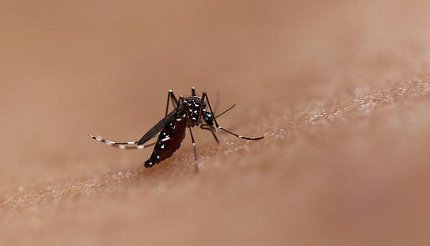Study of Mosquito Protein May Lead to Virus Treatments

Photo: NEI
The mosquito protein AEG12 strongly inhibits the family of viruses that cause yellow fever, dengue, West Nile and Zika and weakly inhibits coronaviruses. NIH researchers found that AEG12 works by destabilizing the viral envelope, breaking its protective covering. The findings, published online in PNAS, could lead to therapeutics against life-threatening viruses that afflict millions of people around the world.
NIEHS scientists used x-ray crystallography to solve the structure of AEG12. Senior study author Dr. Geoffrey Mueller, who heads the NIEHS Nuclear Magnetic Resonance Group, said at the molecular level, AEG12 rips out the lipids, or the fat-like portions of the membrane that hold the virus together.
“It is as if AEG12 is hungry for the lipids that are in the virus membrane, so it gets rid of some of the lipids it has and exchanges them for the ones it really prefers,” Mueller said. “The protein has high affinity for viral lipids and steals them from the virus.”
As a result, Mueller says the AEG12 protein has great killing power over some viruses. While the researchers demonstrated that AEG12 was most effective against flaviviruses—the family of viruses to which Zika, West Nile and others belong—it is possible AEG12 could be effective against SARS-CoV-2, the coronavirus that causes Covid-19. However, it would take years of bioengineering to make AEG12 a viable Covid therapy.
Dr. Alexander Foo, an NIEHS visiting fellow and lead author of the paper, explained that mosquitoes produce AEG12 when they take a blood meal or become infected with flaviviruses. Like humans, mosquitoes mount a vigorous immune response against these viruses, with AEG12 bursting their viral covering.
But early on, Foo and his colleagues knew little about the function of AEG12. “Thankfully,” he said, “we had enough clues and access to a wide range of expertise at NIEHS to piece it together.”
